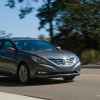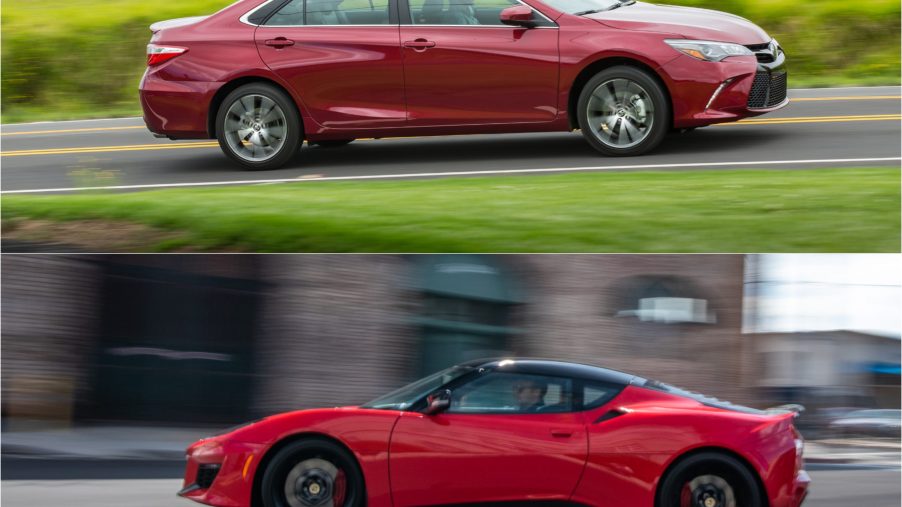
2017 Toyota Camry XSE vs. 2017 Lotus Evora: Different Cars, Same Engine
Comparing a British sportscar to a Japanese midsized sedan should be like comparing apples to oranges, right? Funnily enough, the 2017 Toyota Camry XSE and the 2017 Lotus Evora have one key similarity: their engine. The heart of these cars beats relatively the same, albeit with minor tweaks for fuel economy or power.
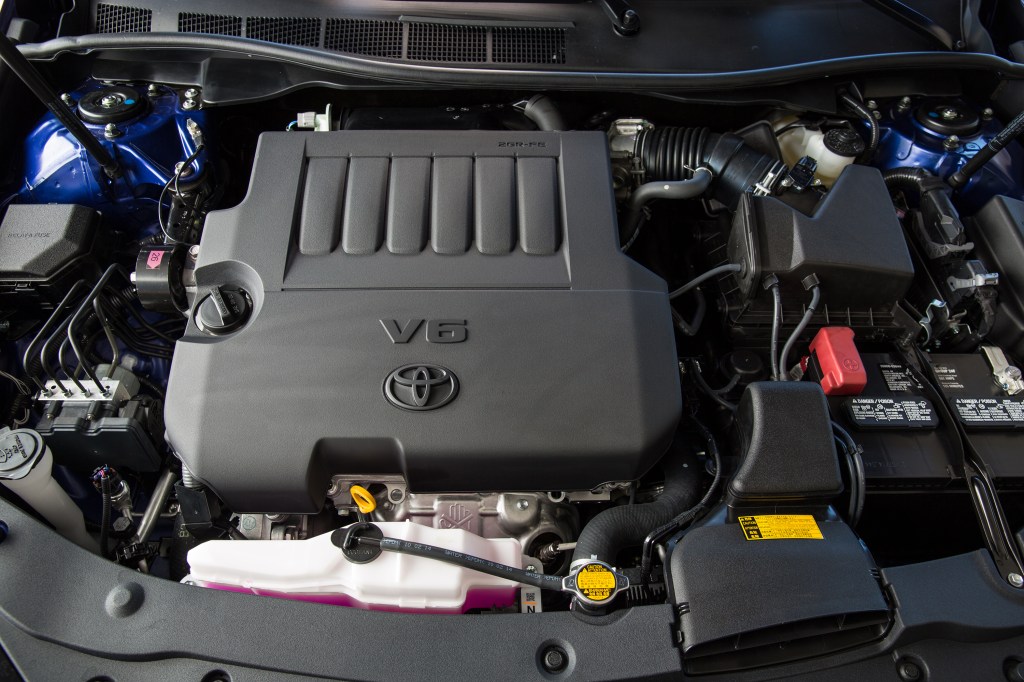
The engine used in both the 2017 Toyota Camry XSE and the 2017 Lotus Evora
Both the 2017 Toyota Camry XSE and the 2017 Lotus Evora take advantage of the Toyota-built 2GR-FE engine. It’s a 3.5L V6 engine that has been in production since 2005. But both companies are still using it today, and for good reason. After all, the engine has been steadfast and reliable after all these years.
Many of Toyota’s engines were known to burn oil, partially due to worn-out piston rings. But the 3.5L V6 has no such weakness. And it also utilizes Toyota’s dual variable valve timing, or VVT-i system, to increase both power and efficiency.
However, just because both the 2017 Toyota XSE and 2017 Lotus Evora utilize this engine doesn’t mean their power or efficiency is exactly the same. As Lotus made some “minor” modifications to the engine.
The 2017 Toyota Camry XSE vs. The 2017 Lotus Evora: by the numbers
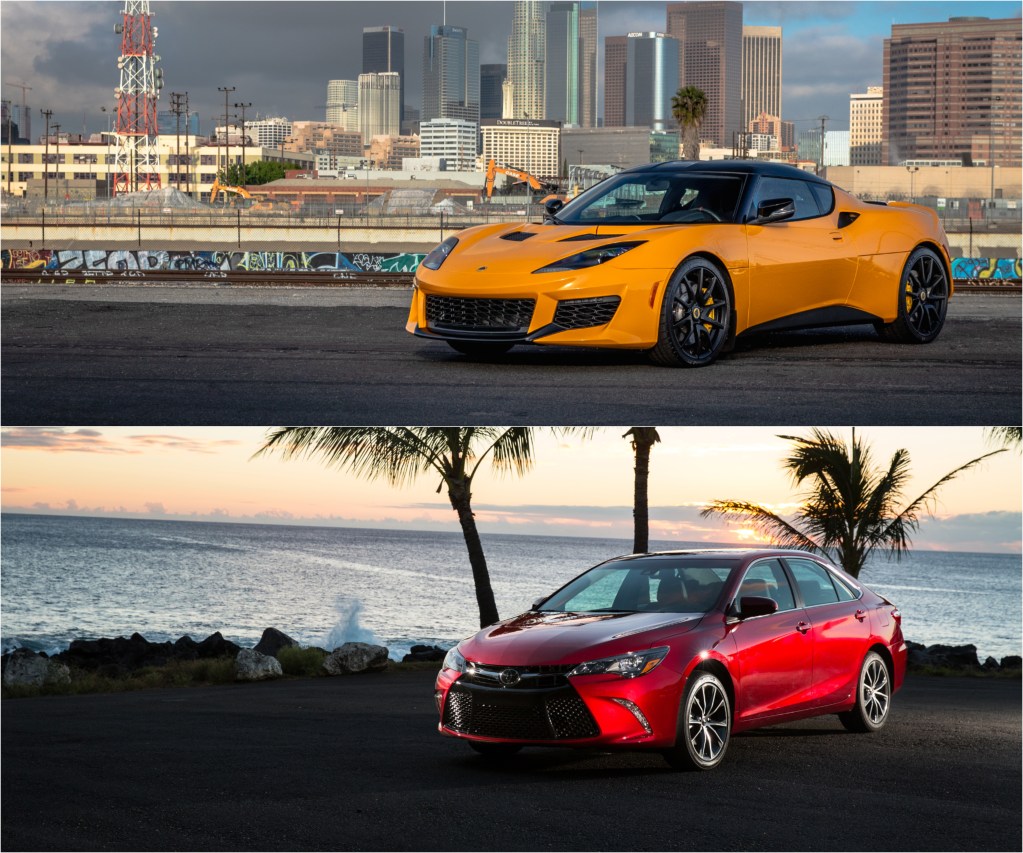
| Vehicle Model | 2017 Toyota Camry XSE | 2017 Lotus Evora |
| Price When New | $31,370 | $93,785 |
| Layout | Front Engine, FWD | Mid Engine, RWD |
| Engine | 3.5L Naturally Aspirated V6 | 3.5L Supercharged/Intercooled V6 |
| Horsepower | 268 horsepower | 400 horsepower |
| Torque | 248 lb-ft | 302 lb-ft |
| Transmission | 6-speed automatic w/ manual mode | 6-speed manual or 6-speed automatic w/ manual mode |
| 0-60 Time | 6.1 seconds | 4.1 seconds |
| Fuel Economy | 21 mpg city/30 mpg highway | 16 mpg city/24 mpg highway |
While the 2017 Toyota Camry XSE may be Toyota’s top-of-the-line trim for their midsized sedan, the engine doesn’t pack the same punch as the 2017 Lotus Evora. That’s because Lotus went through the trouble of slapping a supercharger and intercooler to Toyota’s 3.5L V6 engine, bumping the power up by 152 horsepower. It also came with a faster 0-60 time and a much heftier price tag when new, at almost triple what it costs to buy a 2017 Toyota Camry XSE.
But comparing these cars truly is like comparing apples to oranges. One of them is purpose-built for the track and makes an automatic transmission a $2,700 option. The other is a premium sedan with enough pep to keep the driver entertained. But let’s get down to the nitty-gritty features to see if there’s any point of reference between these two cars.
The 2017 Toyota Camry XSE vs. The 2017 Lotus Evora: key features
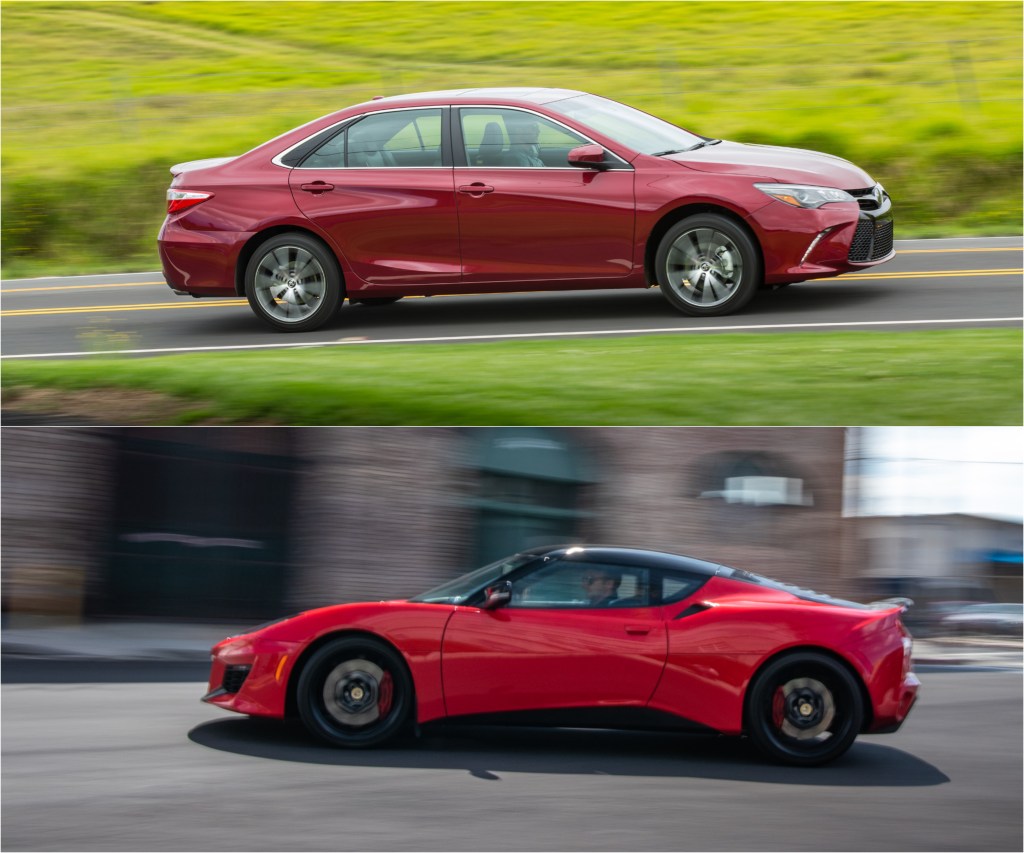
The interior of the 2017 Toyota Camry XSE is exactly as you’d expect. It has a screen, though no Apple CarPlay, as that feature wouldn’t be added to the Camry lineup until 2019. It has leather seating for five passengers and ample room. Nothing terribly flashy, but nothing out of the ordinary either.
The Lotus’ interior, which only seats four, looks slightly dated by comparison. You have two interior options, leather, and microsuede, both of which are of higher quality than the Camry XSE. But the screen and knobs stick out like a sore thumb. On top of that, CarPlay isn’t available for any Lotus models yet. But chances are, you won’t be looking at the inside of your Lotus for very long.
You’ll be throwing around the six-speed manual shifter, or pushing down on the flappy paddles. And while the 2017 Toyota Camry XSE also has those paddles, one could assume that the Lotus has the edge on just how good their car feels. I haven’t been handed the keys to either of these cars, so take my educated guess with a grain of salt.
There’s one key feature of the Lotus that would make any luxury car owner yearn for it: everything was handcrafted. From the body to the interior, and the golf-bag-sized trunk (it’s ridiculously small), the Lotus was built by people, not machines. And while that isn’t a “feature” per se, it sets the car apart in prestige by a long shot.
But the Evora nameplate is about to be outshined by Lotus’ next addition to their fleet, the 2022 Lotus Emira, which is set to use the exact same engine in the 2017 Lotus Evora and, subsequently, the Toyota Camry.
Lotus’ last internal combustion car, the modernized 2023 Lotus Emira, will also use Toyota’s engine
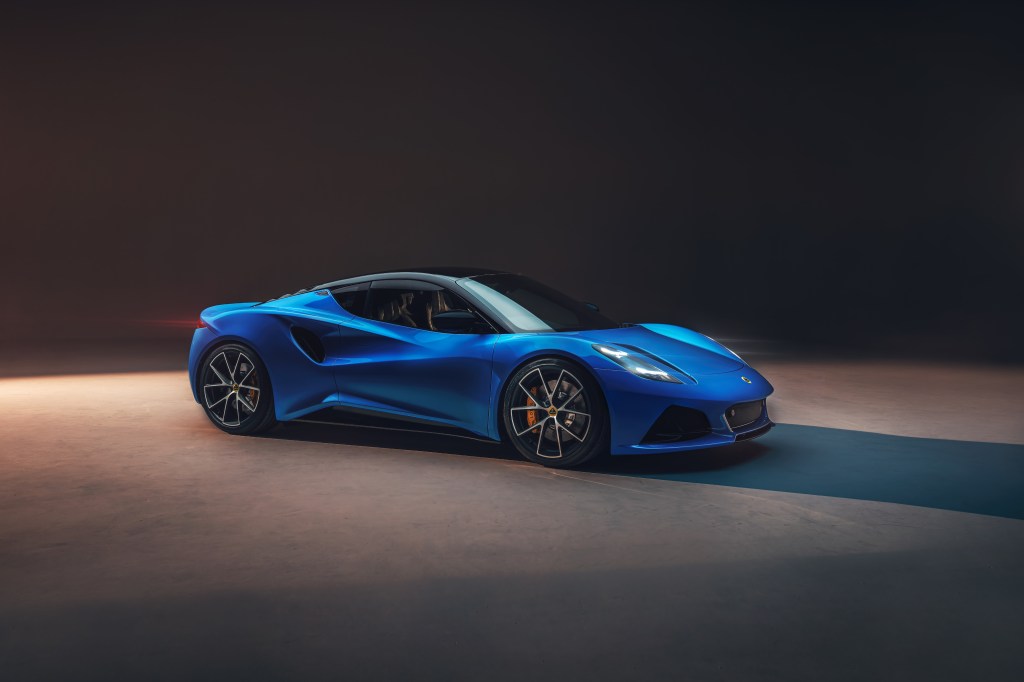
With the same 400 horsepower mark, the 2023 Lotus Emira will be like the Evora, but even more modern. For starters, the car will have a digital instrument cluster, and it’ll be the first Lotus to integrate Apple CarPlay. And overall usability will be improved, with two cupholders rather than one, twin USB ports, and a 12V plug.
But more firsts across all Lotus cars include adaptive cruise control, lane-departure warning, automated emergency braking. While these technologies are breaking new ground for Lotus, the 2017 Toyota XSE already had those features. When it comes to tech, the Lotus Emira is playing a bit of catchup.
But beyond those few details, the two cars live in their own worlds. One is a hand-built roadster, the other is a road-going appliance. Even with the V6 engine, the 2017 Toyota Camry XSE is a dignified, put-together midsized sedan built by the world’s best selling brand. Whereas the 2017 Lotus Evora is British craftsmanship and engineering at its finest. But whatever way you slice it, both cars excel in their own right.
